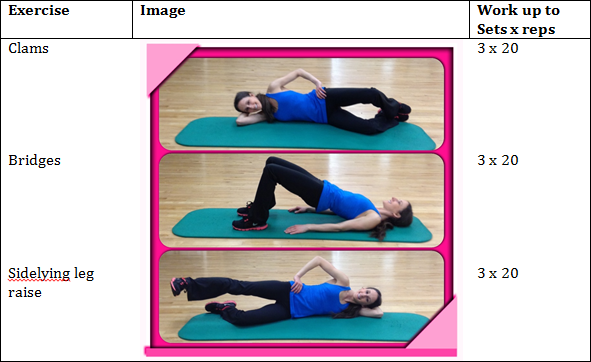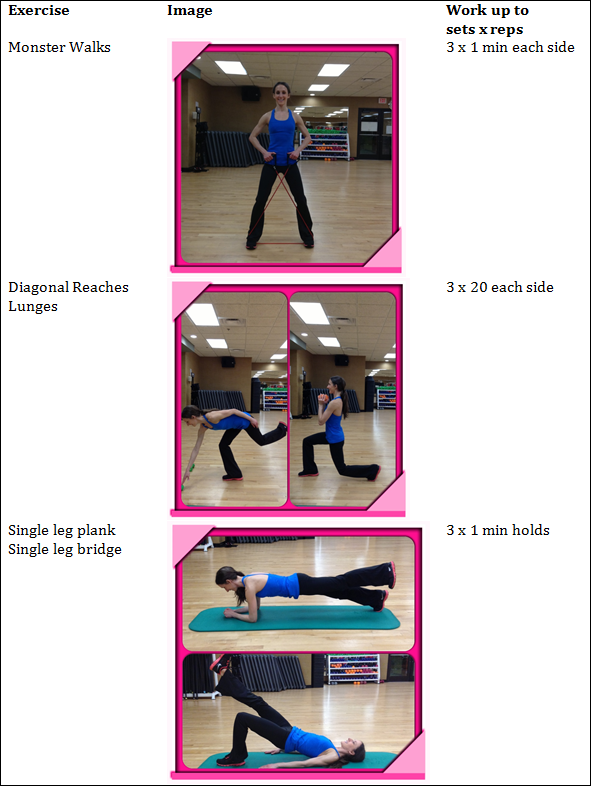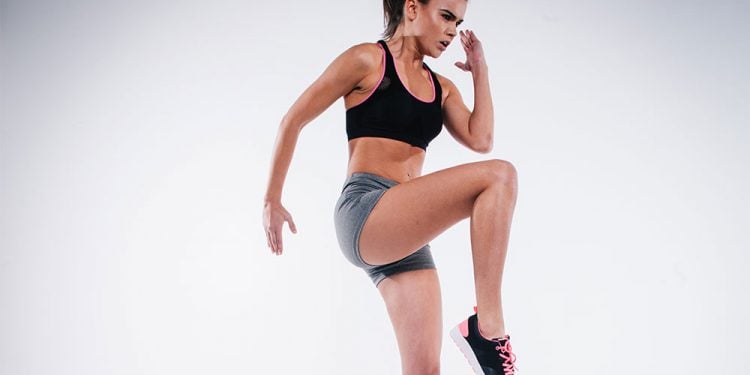You can find more information on female-specific training within the Women's Fitness Specialist course.
Did you know females are more susceptible to knee pain and injury than males? This is due to a number of reasons including: anatomical differences, hormonal differences, biomechanical differences, and strength imbalance differences (MGH Sports Physical Therapy, n.d.).
The good news for women is that many of these factors can be modified in their own gym or studio. Most muscles of the hip influence the alignment and strength of the knee so focusing on hip strengthening exercises can help to prevent injury.
A recent study showed that women with pain in their knee caps (patellofemoral syndrome) had 43 percent less knee pain when incorporating hip strengthening exercises in comparison to those performing knee strengthening exercises alone; those in the knee strengthening group had only 3 percent less pain at 4 weeks (Deydre, 2011; Dolak, 2011).
In addition to improving knee cap pain, hip strengthening exercises are also used in ACL injury prevention programs. Massachusetts General Hospital recommends incorporating forward lunge progressions, monster walks, bridge progressions, plank progressions, and single leg reaching drills in order to gain stability in the knee (MGH Sports Physical Therapy, n.d.).
Here are some suggested exercises for muscle imbalance correction, or in the presence of general kneecap pain:
 Here are some suggested prevention exercises for the more advanced fitness participant or athlete without current knee pain:
Here are some suggested prevention exercises for the more advanced fitness participant or athlete without current knee pain:
 Many of the exercises discussed in this post place relatively little stress on the knee joint itself, therefore, incorporating them into your program is likely to have greater benefit and lower risk than a program designed to strengthen the knee directly. However, if you or your client has persistent knee pain, known acute injury, redness, or swelling, be sure to consult with a medical provider before exercising. Knee pain has multiple causes so a proper diagnosis and classification is important in order to create the most effective and specific programs (Wilk, 1998).
Many of the exercises discussed in this post place relatively little stress on the knee joint itself, therefore, incorporating them into your program is likely to have greater benefit and lower risk than a program designed to strengthen the knee directly. However, if you or your client has persistent knee pain, known acute injury, redness, or swelling, be sure to consult with a medical provider before exercising. Knee pain has multiple causes so a proper diagnosis and classification is important in order to create the most effective and specific programs (Wilk, 1998).
Note that this article is not intended to diagnose, treat, or specifically prevent any condition.
Check this resource out on training considerations for female clients.
References
Deydre, ST, Ed. (2011). Knee pain: strengthen my hips? But it’s my knees that hurt! Journal of Orhtopaedic and Sports Physical Therapy. 41(8): 571.
Dolak, KL, et al. (2011). Hip strengthening prior to functional exercise reduces pain sooner than quadriceps strengthening in females with patellofemoral syndrome: a randomized clinical trial. Journal of Orthopaedic and Sports Physical Therapy. 41(8): 560-700.
Massachusetts General Hospital, Sports Physical Therapy (n.d.). Sports Conditioning for the Female Knee: An Injury Prevention Program. Retrieved from: http://www.massgeneral.org/ortho/services/sports/pdfs/conditioning-female-knee.pdf
Wilk, KE, et al. (1998). Patellofemoral disorders: A classification system and clinical guidelines for nonoperative rehabilitation. 28(5): 307-322.

















